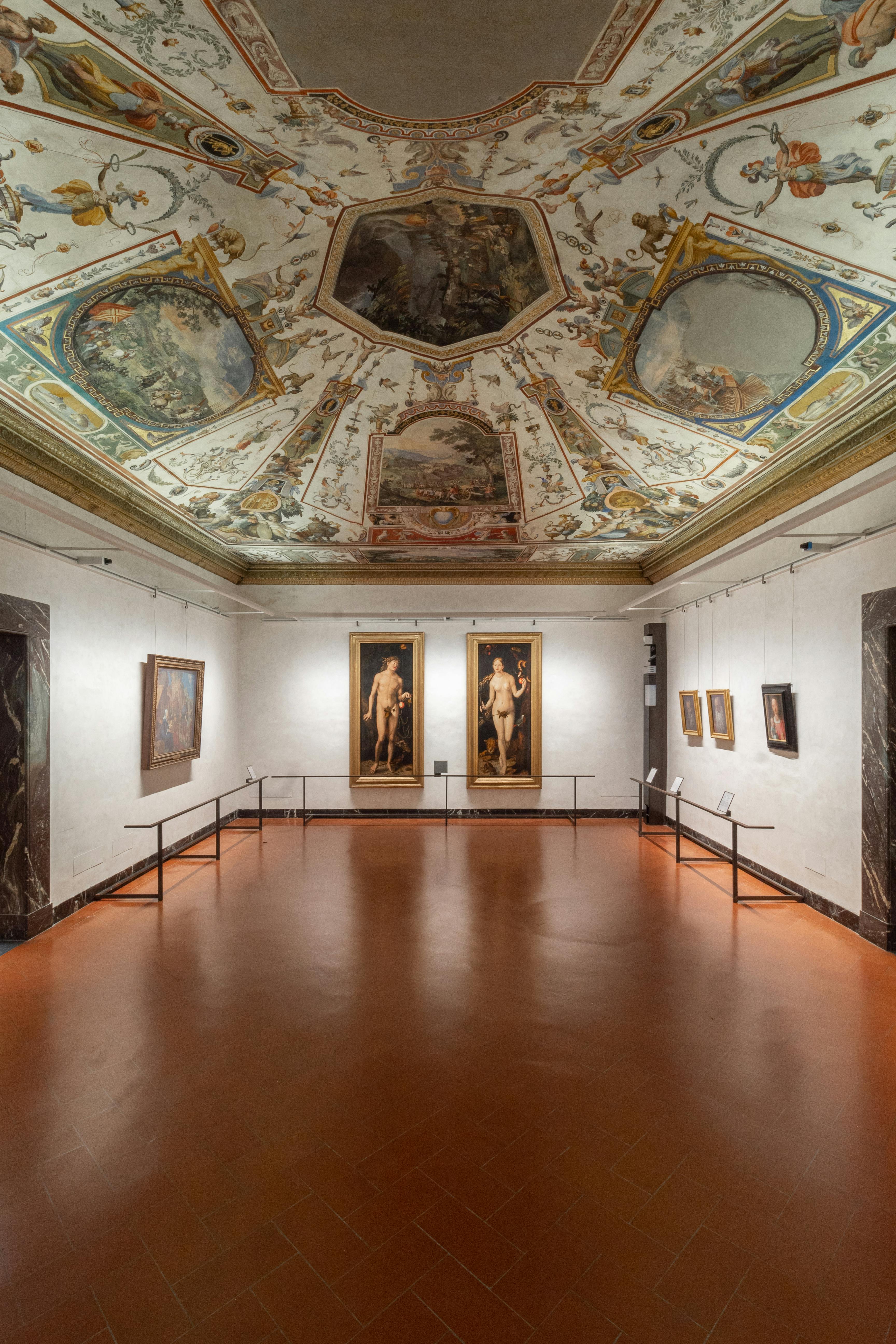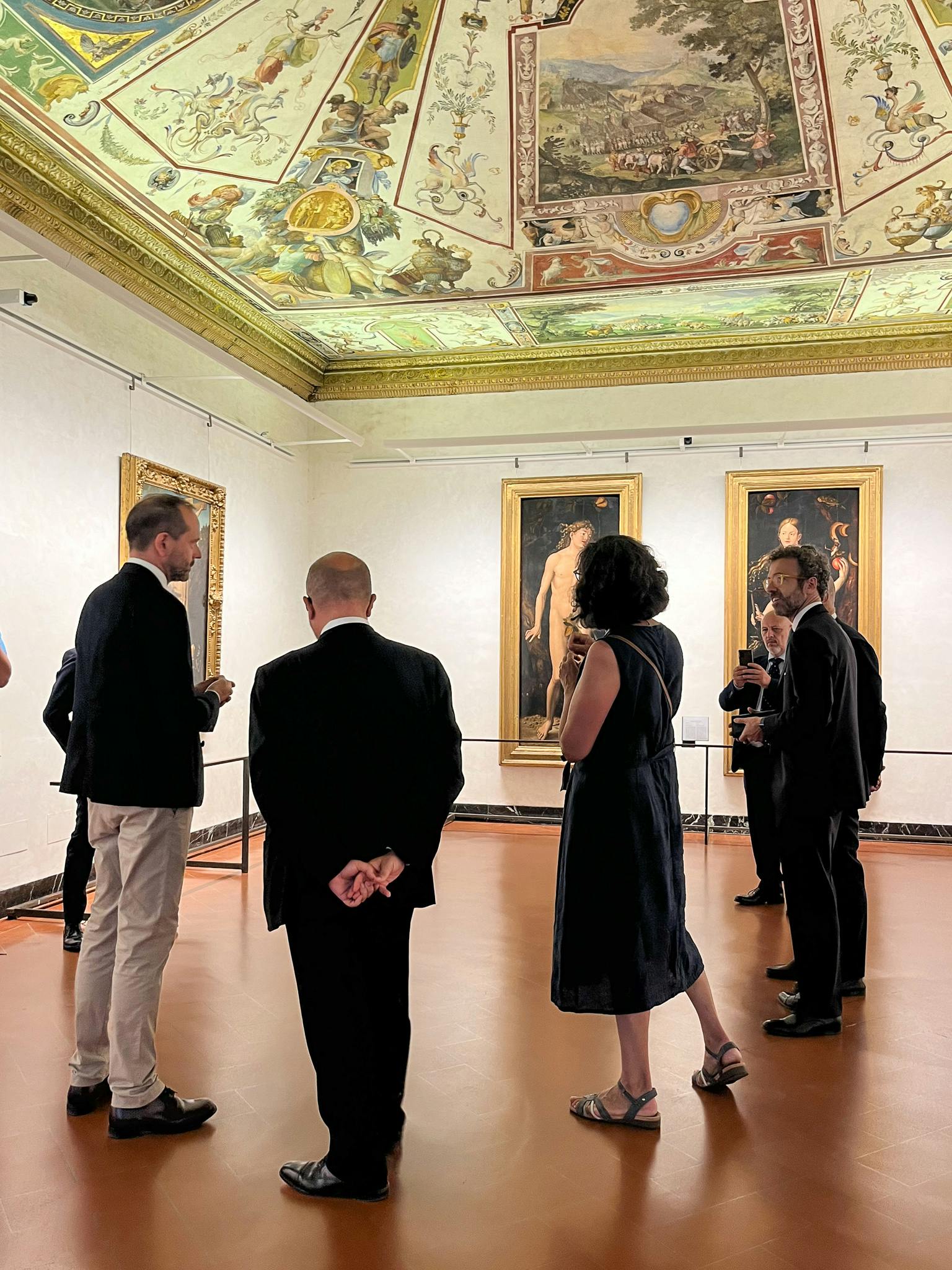Uffizi Galleries: the new rooms of the Flemish Masters
A selection of thirty-one paintings, arranged in three frescoed rooms in the museum's first corridor, showcases the "almost photographic" art of Belgian, Dutch, and German painters of the 15th and 16th centuries: among them, Dürer, Cranach, Memling, Froment, and Van Der Weyden
These rooms are a sequence of three spaces (embellished with frescoed ceilings from the late 16th century), located in the first corridor of the second floor between the Tribuna del Buontalenti and the Cabinet of Miniatures. Completely reinstalled, they now host a selection of 31 paintings from the Northern European school.
This pictorial nucleus, one of the most important in Europe, was brought together in the eastern rooms in the first decades of the last century by Roberto Salvini, director of the Uffizi Galleries in the postwar period, who deserves credit for placing it in dialogue with the masters of the Italian school, making evident the inspirations and reciprocal influences according to an approach then called "internationalist" and now termed "global" in art history. Today's installation aims to revive this connection and illustrate the expressive modes of Renaissance culture in Northern Europe – Flanders, the Netherlands, and Germany – in comparison with works of 15th-century Florentine art.
Tuscan Renaissance painting, through its dialogue with the art of the Netherlands fueled by the cosmopolitan collecting of the Medici, received fundamentally important influences from Northern painters. This rare painting, being imported, primarily showcased a technical skill – that of oil painting – not widespread in the peninsula, which managed, by following an entirely alternative path to linear perspective, to simulate a luminous and metaphysical three-dimensionality through the use of rich color transparency, consistent with the Aristotelian framework of Flemish aesthetic culture. Northern painters also displayed an ability in the meticulous reproduction of natural details with a fine brush, considered so prodigious at the time that it made their work almost a precursor to photography. Hence, in Italy and Florence, there was a desire to acquire works by Flemish artists and to host them in the courts of various cities.
The technical skill exhibited in portraiture was what most impressed the Florentines, already significantly engaged in this genre, and thus among the works displayed in the reinstalled rooms, portraits dominate: this is evident not only from the numerous masterfully executed paintings of this type by Hans Memling, including the Portrait of a Man with a Letter (probably a member of the Italian nation in Bruges), but also from the more realistic than ideal portraits of the Apostles and the Madonna by Albrecht Dürer, and the famous faces of Martin Luther and his wife Katharina von Bora, and again, of Luther and his friend Philipp Melanchthon, all created by Lucas Cranach the Elder.
In addition to portraiture, a significant example of the Medici's attention to Flanders is the Lamentation over the Dead Christ, identified as the panel that Lorenzo the Magnificent's 1492 inventory lists as coming from the altar of the Medici Villa in Careggi. The painting, on oak wood, was commissioned from Rogier van der Weyden, whom many writers of the time considered the greatest Flemish painter. Spectacular, too, is the Triptych by Nicolas Froment, which, after many years of absence from the Gallery, finds its central place in these rooms: its three large panels depict, with a wealth of detail and sparkling colors, moments from the life of Jesus, particularly the episode of the Resurrection of Lazarus. Finally, noteworthy is the intense dialogue in the room between two pairs of large Adam and Eve: one by Cranach and one by Hans Baldung Grien (presumably a copy from Dürer himself).
Director of the Uffizi Galleries Simone Verde:
“The restoration of the Flemish painters’ collection to the public at the Uffizi Galleries is a highly anticipated event. The reason is evident: it is the largest collection of its kind in Italy, rich in celebrated masterpieces. Our reinstallation is thus strategic, also allowing us to recall the figure of a great director of the Galleries, Roberto Salvini, who first viewed art history in terms we would now call global. It was through the exhibition of the Flemish painters that Salvini wanted to highlight the artistic and cultural relations between Florence and Northern Europe, restoring all its complexity to our history and connecting in a broader fabric the richness of this city as a financial and cultural capital in the Renaissance.”
Curator of 15th-Century Painting of the Uffizi Galleries Daniela Parenti:
“The extraordinary portraitists of the Flemish area introduced an attention to the depiction of real data, enriched with elements of psychological introspection, which was greatly appreciated in Florence; to the point of influencing all painting not only in Florence, but also in Tuscany and generally in Italy.”
The new rooms dedicated to Flemish painters were unveiled at the event of 31 July 2024.


